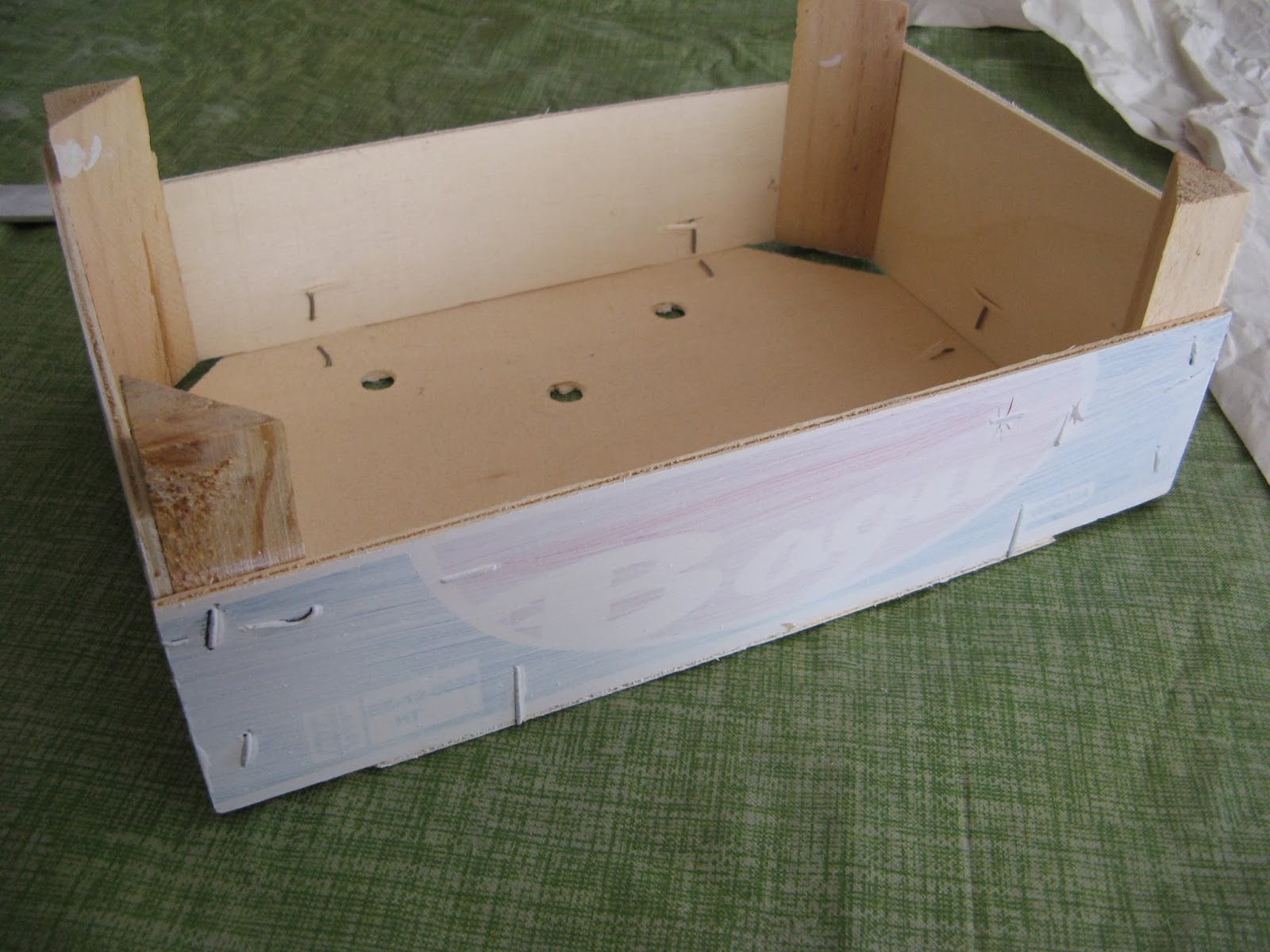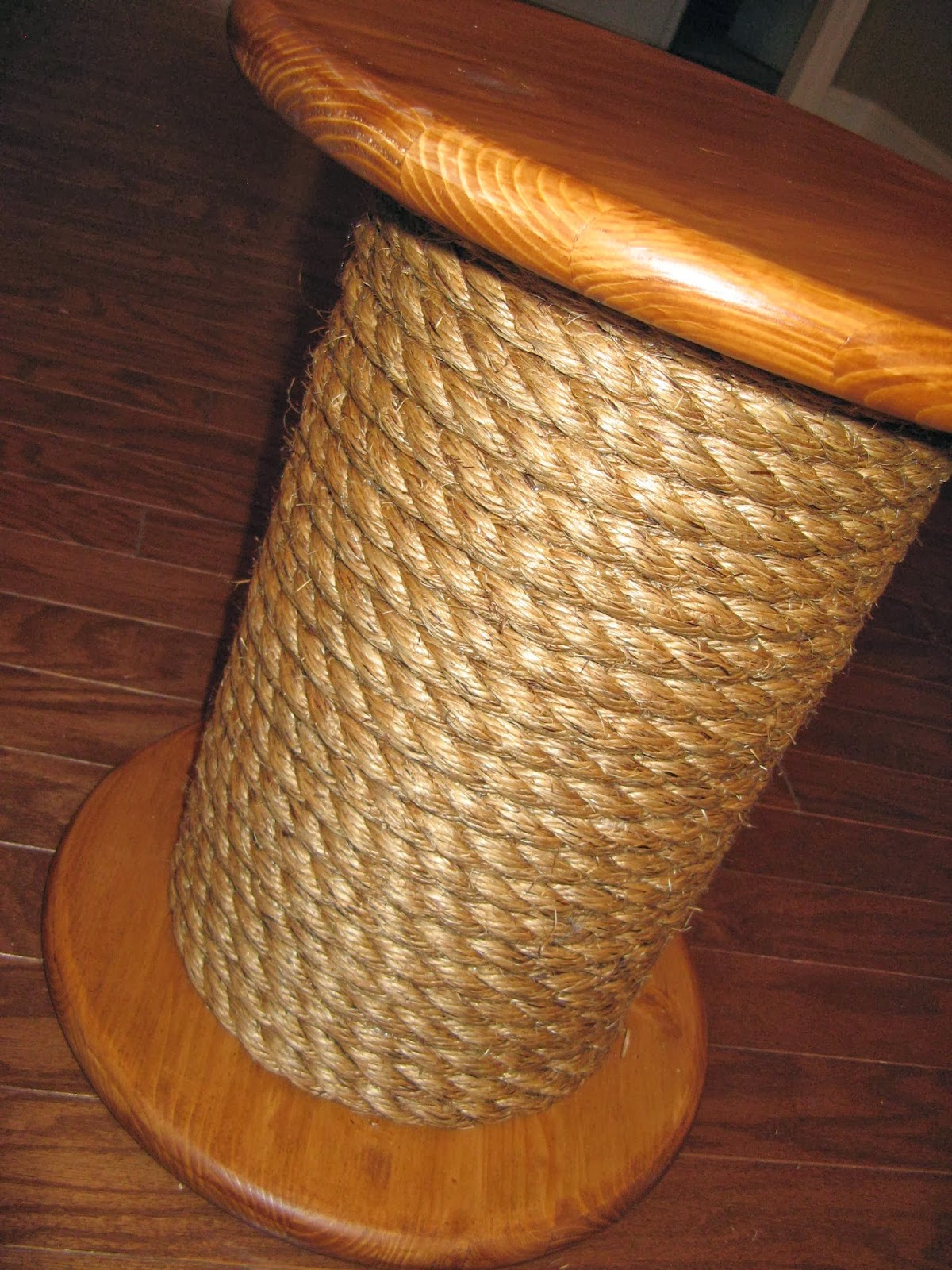This was a really fun project. One of the large bedrooms in our beach cottage has two queen beds. We had furnished the room with two nightstands (one for each bed) . . . and that left the sides of the beds on the angled walls without tables.
 |
| Guest Bedroom |
My friend Nikki suggested putting small tables in those corners - "something like those cute spool tables" she said. I knew exactly what she was referring to because I had seen these in catalogues and on pinterest. I thought that this was a good idea as large nightstands would have overcrowded the space. Small spool tables would be functional without visually crowding the corners of the room. As Nikki put it - "...they will be a unique surprise as you walk around the side of the bed."
I found a post where it was suggested to find a wooden spool as the base and wrap it in rope. This is great, but where do I find perfectly sized small wooden spools for my project? I had seen wooden spools before but a lot of them are huge, I decided to go another route.
I was off to Lowe's to see what I could find. For the base of the table I got an 8 inch diameter concrete form. The form was long enough to cut three 16" sections (perfect for creating eighteen inch tall tables with the two additional inches accounted for by the two 1" wood rounds at either end). At this point, I'm only making two tables so I have a piece of tube leftover for another project. I thought using the concrete form was a brilliant idea, but I later found other posts showing the same idea. Note - I found it fairly easy to cut the concrete form with a drywall knife.
 |
| You can cut the concrete form with drywall knife |
I purchased wooden rounds for the top and bottom of the table, from the lumber department (they were about $7 a piece, so it was $15 per table). I could have done this cheaper by cutting a couple circles out of plywood, but I splurged since they were the ideal size for these tables, had finished edges, and they were ready to go. They are 1" thick and 15" in diameter.
Before assembling the table, the rounds were sanded and stained. I used a can of Minwax stain which I think was about 10 years old and never opened. It was a stain and poly' in one, so I liked that I could skip a step later. I used two coats of this to get the finish I wanted. (I've also used gel stains on other projects which would have been a good option here as well.)
The concrete form pieces were spray painted a high gloss black. I figured any dark color would do, and that is what I had on hand. The purpose of painting them was to avoid the yellow and black graphics from peaking through between the rope.
I put the tables together with Liquid Nails. I had an old tube of Liquid Nails where the tip had dried out, but I was determined to make it work (in other words - I was being cheap). I ripped off the tip of the tube with a pair of pliers. I was able to squeeze the adhesive out of the end of the tube and apply it with a plastic butter knife.
If you look close you can see the circle I drew on the wood as a guide for where to put the adhesive. I drew this by placing the tube on the wooden round and used a marker to trace around it. Don't worry - the 3/4" of rope will cover up the line. This showed me exactly where to spread the Liquid Nails.
Once I spread the glue, I placed the cylinder on top.
After applying the cylinders to the table, I used the butter knife again to spread more Liquid Nails around the edges of the tube for added stability. Don't get too carried away here - you want to make sure the rope will cover up the adhesive.
For a 16" cylinder I estimated it would take about 50 feet of 3/4" manila rope (I ended up using about 53 feet on each table). Lowe's sells an entire 150 foot spool for about $90. Enough for a couple tables and would allow for extra if necessary. I'm sure I will find something to do with the additional rope (I'm already thinking garland on the stairway of our beach cottage at Christmas time). Note - you can also purchase the rope by the foot.
TIP: I found that a small hacksaw works well to cut the thick rope.
The ends of the rope will need to be finished or they will ravel when cut. You can do this with tape (something heavy duty like electrical tape), or you can use hot glue. If you want to use the glue method: on the cut end, stick the glue gun tip into the middle of the strands of rope and apply some glue. Remove the glue gun and twist and squeeze the end of the rope. You may want to apply some more glue in select spots, but for the most part this should hold.
I applied the rope to the tables with hot glue. I applied it every 6 inches or so in two places (1) to the top of the rope (where the next row was going to sit) and (2) to the side of the table as well. I was sure to push down on the rope as I went along so I wasn't leaving any gaps.
Note - when I got toalmost the top of the table - I had too small of a gap to fit another width of the rope. No worries - I went around the cylinder one more time, even though this piece of rope stuck out a little more than the others. You can see this in the photo below. I think this is fine since you cannot see this underneath the table top, but it completely covers the base without leaving a gap.
I also gave the tables a "hair-cut" since the table looked a little "hairy". A quick pass with scissors is all you need.
I think these tables worked out well in the room. You don't see them unless you walk around the side of the beds (in a way this makes me sad because they are so cute). They are perfect for the space and I like how they don't overcrowd the room. Guests have the perfect spot to place cell phones, jewelry, glasses, etc...
SUPPLIES
NOTE: All of these supplies can be found at Lowe's (or I imagine most hardware stores).
For an 18" tall table, 15" wide.
- 2 Wooden Rounds 1" thick, 15" wide (buy them ready to go at Lowe's or cut your own)
- Stain (I used Stain and Poly' in one)
- Brush (to apply stain)
- Polyurethane (I didn't need this because of the type of stain I used)
- Concrete Form 8" in diameter. Cut to 16" tall. (if you would like a taller table - cut a bigger piece)
- Drywall knife to cut cardboard concrete form.
- Dark Spray Paint (any dark or neutral color will do - I used black)
- Liquid Nails
- Calk Gun (for the Liquid Nails)
- Plastic butter knife to spread liquid nails (maybe not entirely necessary but useful)
- 53 feet of 3/4 inch Manila rope (approximately) to cover 8" cylinder, 16" tall
- Small hacksaw (to cut rope)
- Hot Glue Gun and Glue Sticks
- Scissors (to trim the small strands of rope after table is put together)






































